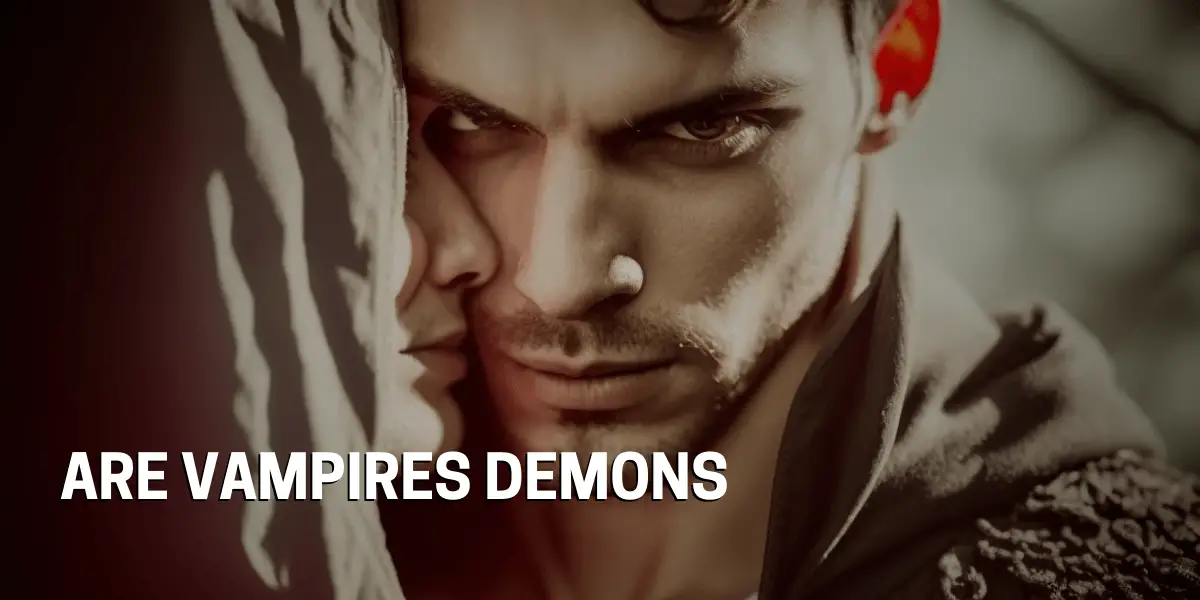Are Vampires Demons?
Certain individuals have long been fascinated by the idea that vampires, or creatures that feed on the blood of humans, may also be demonic. Throughout history, there have been many stories and myths surrounding the association between vampires and demons. In some cases, people believed that vampires were actually demonic entities, while in others, they were seen as creatures that could be controlled by demonic forces.
The history of vampires and their association with demons is a complex one. In some cultures, vampires are seen as supernatural creatures with a connection to the spirit world. In others, vampires are seen as creatures of the night, with powers that can be used to control and manipulate the living.
Beliefs about vampires and demons vary from culture to culture. In some cultures, vampires are seen as creatures of the night and demons as evil forces that can be used for evil purposes. In others, vampires are seen as creatures that are more like humans, and are capable of controlling their own destiny.
The relationship between vampires and demons today is a complex one. In some cultures, vampires are still seen as being linked to demonic forces, while in others, they are seen as creatures of the night, with powers that can be used for good or ill.

Definition of a Vampire
Vampires have been a part of folklore and mythology for centuries. From Bram Stoker’s iconic novel, Dracula, to modern interpretations of vampires in popular culture, the creature has been a powerful figure in our collective imagination. But what is the reality of vampires? What is the definition of a vampire, and how do they differ from other supernatural creatures?
To understand the reality of vampires, it’s important to first understand the definition of a vampire. In the most general sense, a vampire is a creature that feeds on the blood of humans and other animals. They are typically described as having pale skin, pointed teeth, and an aversion to sunlight. They also possess a number of supernatural abilities, such as superhuman strength, the ability to transform into an animal, and the power of hypnotic suggestion.
However, vampires differ from other supernatural creatures in a number of ways. For instance, vampires are often portrayed as being immortal, while other creatures, such as werewolves, have limited lifespans. Vampires also possess a heightened sense of awareness, allowing them to detect even the slightest sound or movement.
When it comes to whether vampires are considered to be demons, opinions are divided. Some believe that vampires are simply creatures of the night, while others believe that they have a connection to the spirit world and may be used for evil purposes.
Vampires possess a number of unique characteristics. In addition to their supernatural powers, vampires also have a heightened sense of smell and hearing, which allows them to detect their prey from a distance. They also have the ability to shape-shift into a variety of forms, such as a bat or a wolf, in order to hunt. Lastly, vampires have a thirst for blood, which is why they prey on humans and other animals.
Reality of Vampires
Various opinions exist about the reality of vampires. Are they real or just a myth? Historical evidence of vampires can be found in cultures all around the world, from Bram Stoker’s iconic novel, Dracula, to modern interpretations in popular culture.
A vampire is generally defined as a creature that feeds on the blood of humans and other animals, possessing pale skin, pointed teeth, and an aversion to sunlight. In addition, vampires possess a number of supernatural abilities, such as superhuman strength, the ability to transform into an animal, and the power of hypnotic suggestion.
While some believe that vampires are simply creatures of the night, others believe that they have a connection to the spirit world and may be used for evil purposes. Vampires also possess an enhanced sense of smell and hearing, allowing them to detect their prey from a distance, and the ability to shape-shift into a variety of forms.
Lastly, vampires have a thirst for blood, which is why they prey on humans and other animals. While there is no one right answer when it comes to the definition of a vampire or their relationship to demons, vampires possess a myriad of unique characteristics that have captivated our imaginations for centuries.
Distinction between Vampires and Demons
Plenty of debate exists around the distinction between vampires and demons. While these two entities have been associated with each other in popular culture, the truth is that they are two distinct entities. Vampires are typically portrayed as undead creatures that feed on the blood of the living. Demons are supernatural beings of evil intent, usually associated with the forces of darkness.
Vampires are believed to originate from either folklore or literature, while demons are believed to originate from religious beliefs. In terms of their powers, vampires typically possess supernatural abilities such as shape-shifting, superhuman strength, and the ability to control animals.
Demons are believed to possess powers such as telepathy, teleportation, and the ability to possess people.
Biblical Reference to Vampires
Numerous religions throughout human history have attempted to explain the unexplainable, and the presence of vampires in popular culture is no exception. From early Christian teachings to modern interpretations, the idea of vampires has been around for centuries. While there are no specific references to vampires in the Bible, there are many passages that can be interpreted as discussing them. For example, in the Book of Isaiah, there is a reference to the dead who come back to life, which can be seen as a reference to vampires.
In the Book of Leviticus, there is a directive to not allow the dead to feed on the living, which can also be interpreted as a reference to vampires. Christian teachings about vampires generally focus on the idea that they are unholy creatures that prey on the living. As such, many Christian teachings forbid the practice of vampirism and urge people to stay away from such activities. These teachings also emphasize the importance of protecting oneself from vampires by avoiding dark places and engaging in activities that will please God.
The relationship between vampires and demons is a complex one. While vampires are often associated with evil and darkness, they are not typically seen as demonic. Instead, they are seen as separate entities, although their relationship is often linked with the idea of the supernatural. In some cases, vampires are believed to be servants of demons, while in other cases, they are seen as independent entities.

Cultural Representations of Vampires
Throughout history, vampires have been represented in folklore, literature, film, and television. From the seductive and mysterious to the monstrous and evil, these supernatural creatures have taken many forms over the years. The popularity of vampires has grown significantly in recent decades, with the emergence of the Twilight saga, True Blood, and The Vampire Diaries.
As a result, vampires have had a significant cultural impact, influencing fashion, music, and art in many parts of the world. These representations have sparked debates among scholars as to whether vampires belong to the demon category and their relationship to other supernatural creatures.
Varieties of Vampires
Half a sentence is enough to capture the imagination when it comes to vampires. From traditional tales of Bram Stoker’s Dracula to modern day vampire narratives, the concept of vampires has captivated audiences for centuries.
Vampires come in many varieties, including traditional vampires, vampire-like creatures, and other supernatural beings that may exhibit vampiric traits. Traditional vampires are the most well-known, possessing supernatural powers such as superhuman strength, the ability to transform into a bat, and the ability to turn humans into vampires.
Vampire-like creatures, on the other hand, are much less powerful and lack the same supernatural powers as traditional vampires. Other supernatural beings, such as shapeshifters and mind-controllers, have been described in folklore and popular culture that may exhibit some vampiric traits, although they are typically not considered to be true vampires.
All of these differing varieties of vampires have helped to shape the varied narrative of vampires throughout history.
Contemporary Vampire Narratives
Dozens of popular works of fiction in the 21st century feature vampires as protagonists or antagonists. Stephenie Meyer’s Twilight Saga, L. J. Smith’s Vampire Diaries and Richelle Mead’s Vampire Academy series are just a few of the examples.
Vampires in these narratives are often portrayed in a morally ambiguous light, possessing both good and evil qualities. From the classic vampire villain depicted as an undead creature to the more benevolent immortal being, there is a wide range of interpretations of vampires in these stories.

